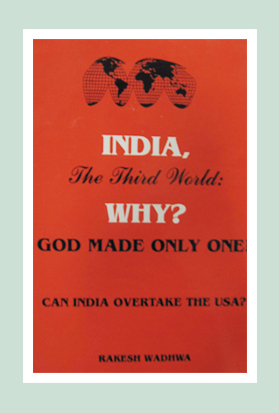The History and Modern Forms of Baccarat
Which is the game whose dealings end up influencing the annual turnovers of major casinos across the globe? Which game is the favourite of the ‘high rollers’ or the casino’s crème de la crème? It is the game that was once a penchant for the French royalty and has been shown in most of the Bond movies. Yes, ladies and gentlemen, it is Baccarat.
Origins and History of Baccarat
Baccarat, the world’s oldest card game, takes its name from the French word ‘Baccara’, meaning zero. It has a long history spanning more than six centuries, dating all the way back to the early 1400s, and one of the stories for its origins state that it was invented by an Italian called Felix Falguierein.
Falguierein purportedly used tarot cards, and the game was based on an old Etruscan ritual during which nine gods prayed to a blonde virgin waiting for her to throw a nine-sided die. Her fate was decided by the result of the roll of the die. If she threw an eight or a nine, she would become the priestess; if the die showed a six or seven, she would forever be banned from any religious activities and if the result was any number less than six, she would walk into the sea.
Baccarat is one of the oldest casino games to ever be played and one of the most mystifying, according to many who have dealt their hand in it. The significance of the name is attributed to the value assigned to all tens, jacks, queens and kings, which is zero.
It is said to have travelled to France via Italy, thereon to England and the rest of Europe. It was to take 500 years before it could establish itself as one of the most successful card games in European casinos. From there it crossed the Atlantic and reached American shores. In fact the Baccarat we refer to in the modern sense, is the American version, which is most popular nowadays.
This fascinating game started as Baccara in Italy, form where it was introduced to the French in 1490 during the reign of King Charles VIII. It was the French version of the game or ‘Chemin de Fer’ that became popular in England.
An alternate version called the Punto Banco came into existence when the game was introduced in South America in the 1950s. In 1959, Punto Banco was started in Las Vegas, with the Chemin de Fer already having reached there a few years earlier. The casinos eventually developed their own version, called Nevada Baccarat.
How Baccarat is Played Today
The objective of the game is to get a winning hand as close to nine as possible. The full version is played in a separate area on a table for 14 players, with three dealers. Numbers on the table denote the position of each player or bettor, in front of which is a demarcated areas to play banker bets or player bets. In front of each dealer are numbers corresponding to each player.
The bettor holding the shoe (having eight decks of cards) deals his/her cards, and then the head dealer or the call man turns the cards face up. The call man calls out the point totals of each hand and announces whether each hand will get another card based on the stand rules. The other two dealers pay off losing wagers and collect winning bets. Every time a bettor wins a banker bet, the dealer places a marker in the number box for that bettor. All wagers need tracking, as bettors pay a 5% commission on each wining banker bet.
Different Versions of Baccarat
The Classic or Punto Banco Baccarat is played with six standard 52 card decks. Winning depends on the hand you bet on and not the hand that you are playing. The objective is to predict whether the banker’s (Banco) or player’s (Punto) hand will win. Your bet will be returned if you do not bet on a tie and the hand gets tied.
Chemin de Fer, or the European version, is the same as Nevada Baccarat except for the fact that the bettor can either bet on player or banker, the dealer does not play the role of banker. If the role of a banker is refused, the shoe can be passed to the player to the right, going around the table (hence the name, which means ‘railroad’). The dealer or ‘Croupier’ is only responsible for strict adherence to the rules. Also, there are flexible rules for drawing the third card.
In European Baccarat, the casino finances the banker hand, which decides the betting limit. Once the betting limit is reached, no new players are allowed to bet. If a player bets the entire amount, he/she calls out ‘Banco’ and the other players cease betting. The dealer controls the banker, and he/she has an option of drawing a third card.
The ‘en banque’ version is played in some of the European casinos. One bank hand and two player hands are dealt, with the bettors having a choice to bet on one or both player hands, but never the banker hand. Drawing rules are completely optional. In this case the casino may charge lesser than 5% of the winning bet.
The American ‘Nevada’ version allows for only two hands to be dealt, regardless of the number of bettors. One either bets on a player, a banker or a tie. Players alternate to play bankers and the shoe goes counter-clockwise around the table.
The game seems to find favour in Asia, in countries like Nepal. This is possibly because the people of this region are ardent believers of fatalism, and this game is all about fate (and luck, of course).
Involving unbiased playing, Baccarat is a fast paced, action filled game… something that you just cannot miss if you are planning to try your luck at a casino.
 Rakesh Wadhwa. Ever since, I was a school boy, I knew India was on the wrong path. Socialism was just not what we needed to get ahead. Government controlled our travel; government controlled our ability to buy and sell; and government controlled our freedom to move our money. My life has focused on the inherent rights people have. When I was in college, I never understood, what the governments meant by their "socialistic attitude". If people are free to buy, sell and move their capital themselves without any restrictions by state, then the welfare of people is inevitable & hence the countries they live in will become wealthy. The government has no right whatsoever, to point a finger at me or my business. I am not a revolutionary. I just want to light up my cigarette and not get nagged about it. I believe in non-interfering attitude to attain more.
Rakesh Wadhwa. Ever since, I was a school boy, I knew India was on the wrong path. Socialism was just not what we needed to get ahead. Government controlled our travel; government controlled our ability to buy and sell; and government controlled our freedom to move our money. My life has focused on the inherent rights people have. When I was in college, I never understood, what the governments meant by their "socialistic attitude". If people are free to buy, sell and move their capital themselves without any restrictions by state, then the welfare of people is inevitable & hence the countries they live in will become wealthy. The government has no right whatsoever, to point a finger at me or my business. I am not a revolutionary. I just want to light up my cigarette and not get nagged about it. I believe in non-interfering attitude to attain more. 
 The Bastiat Award is a journalism award, given annually by the International Policy Network, London. Bastiat Prize entries are judged on intellectual content, the persuasiveness of the language used and the type of publication in which they appear. Rakesh Wadhwa won the 3rd prize (a cash award of $1,000 and a candlestick), in 2006.
The Bastiat Award is a journalism award, given annually by the International Policy Network, London. Bastiat Prize entries are judged on intellectual content, the persuasiveness of the language used and the type of publication in which they appear. Rakesh Wadhwa won the 3rd prize (a cash award of $1,000 and a candlestick), in 2006.
What the readers are saying…